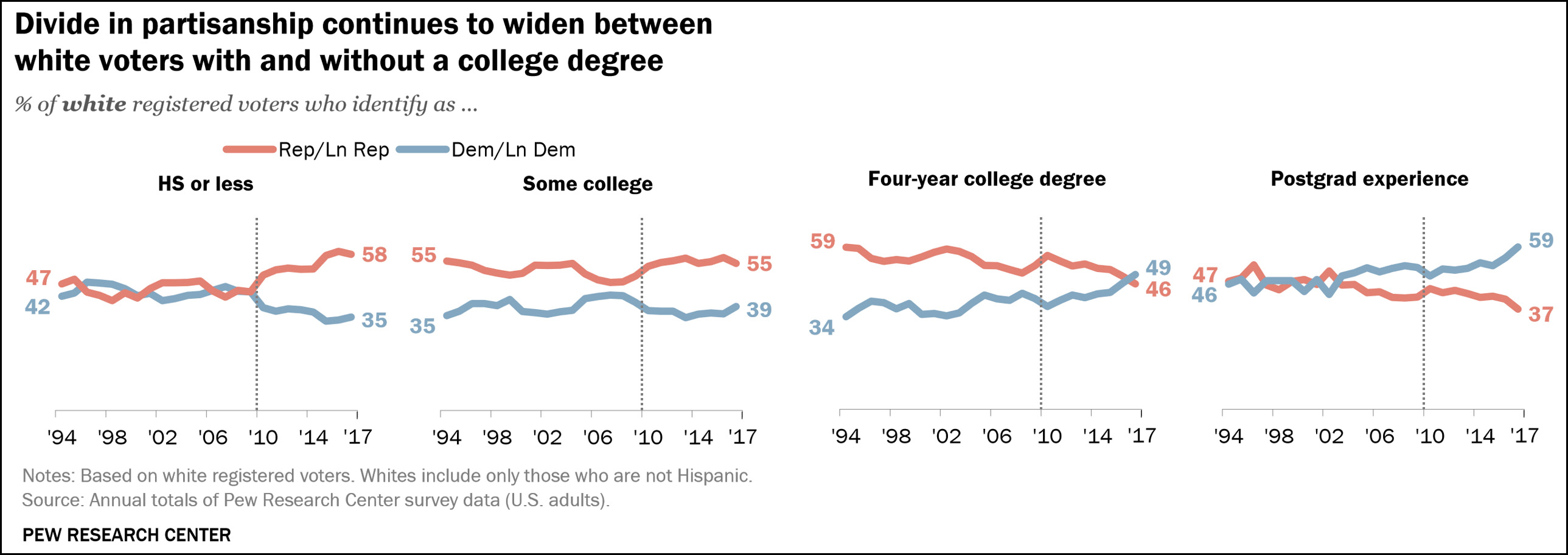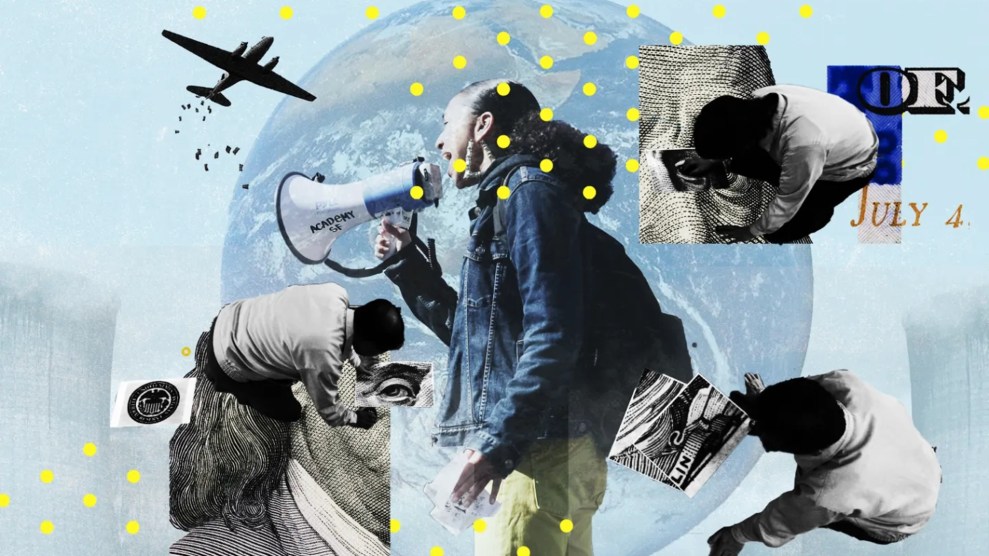Here’s a series of charts from Pew Research showing the party ID of white voters. I have helpfully added a dashed line for the year 2010:

With the (odd) exception of the group with some college, the party ID of white voters had a big inflection point in 2010. There was only modest movement before then, but starting in 2010 the high school crowd suddently flocked to the Republican Party while the college crowd flocked to the Democratic Party.
Two things happened around 2010 that could have affected voters strongly: the Great Recession and the presidency of Barack Obama. However, the Great Recession affected everyone fairly equally: high school grads saw an income drop of about 7 percent while college grads saw an income drop of 5 percent (between 2008 and 2012). There’s no special reason that high school and college grads should have reacted in violently opposite directions to that.
So that leaves Barack Obama. White high school grads saw a black Democrat in the White House and fled from the Democratic Party. White college grads saw a black Democrat in the White House and stampeded to the Democratic Party.
Note that among high school grads, Donald Trump really had nothing to do with this: they had already abandoned the Democratic Party by 2015 and nothing much changed over the next two years. Among college grads, however, the change of party ID accelerated when Trump took the stage. This suggests, perhaps, that Trump hasn’t done much to attract more white votes to the Republican Party, but he has done a lot to lose white votes. This is not good news for Republicans in 2018. As Republican Sen. Lindsey Graham so vividly said once, “We’re not generating enough angry white guys to stay in business for the long term.” We can hope he was right.

















